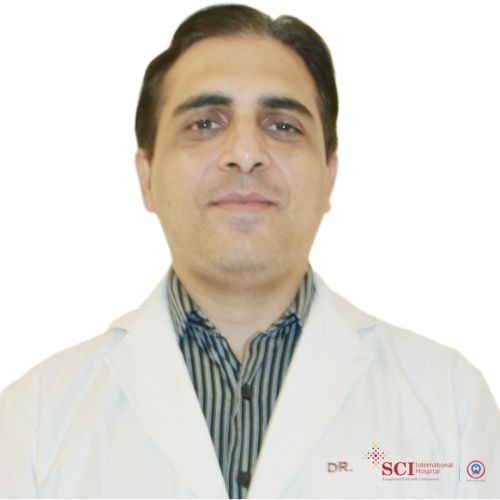A deviated septum occurs when this partition is crooked or displaced, which can lead to a range of issues such as difficulty breathing, chronic nasal congestion, frequent sinus infections, nosebleeds, or even sleep disturbances like snoring and sleep apnea. This condition may be congenital (present at birth) or result from trauma or injury to the nose.
Septoplasty is a functional surgery aimed at improving airflow through the nasal passages by straightening the septum. It is not typically performed for cosmetic reasons, although it can be combined with rhinoplasty (aesthetic nose surgery) if desired. The procedure has a high success rate, with most patients experiencing significant improvement in their symptoms and quality of life after surgery.
We Are Rated
Consult Now
Septoplasty is generally performed as an outpatient procedure, meaning patients can return home on the same day. It is done under local anesthesia with sedation or general anesthesia, depending on the complexity of the case and patient preference. Here’s a step-by-step explanation of how the procedure is carried out:
Anesthesia Administration: The patient is given either local anesthesia (to numb the area) or general anesthesia (to make them unconscious during the procedure). This ensures that the surgery is pain-free and comfortable.
Incision Inside the Nose: The surgeon makes a small incision inside one side of the nasal cavity to access the septum. This approach avoids any external scars.
Lifting the Mucosal Lining: The mucosal lining, which is a thin membrane covering the septum, is carefully lifted to expose the underlying cartilage and bone.
Reshaping the Septum: The surgeon removes or repositions the deviated portions of cartilage and bone to straighten the septum. In some cases, excess cartilage may be trimmed and repositioned for better alignment.
Closing the Incision: Once the septum is corrected, the mucosal lining is placed back over it and sutured into position.
The entire procedure typically takes between 30 minutes to 90 minutes, depending on the complexity of the deviation. In some cases, additional procedures like turbinate reduction (to shrink swollen nasal tissues) may be performed alongside septoplasty for optimal results.
Septoplasty is primarily performed to address functional issues caused by a deviated nasal septum. These issues can significantly impact daily life and overall health if left untreated. Common reasons for undergoing septoplasty include:
Septoplasty is often recommended when these symptoms are severe enough to interfere with daily activities and when non-surgical treatments such as medications fail to provide adequate relief. It can also be performed in conjunction with other procedures like rhinoplasty for patients seeking both functional and cosmetic improvements.
While septoplasty is generally considered safe and effective, it does carry some risks like any surgical procedure. Understanding these risks helps patients make informed decisions about their treatment:
It’s essential to discuss these risks with your surgeon during consultation to ensure you fully understand what to expect from the procedure.
Proper nutrition plays a vital role in recovery after septoplasty by promoting healing and reducing inflammation. Following a specific diet can help minimize discomfort and speed up recovery:
To ensure proper healing after surgery and reduce complications:
Your surgeon will provide personalized instructions based on your specific case.
The cost of septoplasty in India varies depending on several factors such as hospital location, surgeon expertise, type of procedure (traditional vs endoscopic), and whether additional treatments are required alongside it (e.g., turbinate reduction). Since exact costs depend on individual cases and needs, it’s best to consult an experienced ENT specialist for detailed advice on pricing.For accurate information regarding costs tailored to your specific condition and treatment plan, we recommend contacting SCI Hospital directly. Their team will guide you through available options while ensuring high-quality care suited to your requirements.

MBBS, MS - ENT, ENT/ Otorhinolaryngologist
Recovery after septoplasty typically spans several weeks but varies among individuals based on factors like age, overall health status, and adherence to post-operative care instructions:
Patience plays an essential role during recovery—your body needs time before experiencing full benefits from surgery!
No, septoplasty is not considered a major surgery. It is typically performed as an outpatient procedure, allowing patients to return home the same day, and involves minimal risks when conducted by an experienced surgeon.
Pain after septoplasty is usually mild to moderate and can be effectively managed with prescribed pain medications. Most patients report discomfort rather than severe pain, with symptoms subsiding within a few days.
Septoplasty is generally performed after nasal structures have fully developed, which is around 16 years of age for females and 18 years for males. There is no upper age limit, provided the patient is healthy enough for surgery.
Most stitches used during septoplasty are dissolvable and naturally disappear within 7–10 days post-surgery. This eliminates the need for stitch removal and ensures a smoother recovery process.
Yes, septoplasty is considered a safe procedure with a high success rate when performed by a qualified ENT surgeon. While complications are rare, they can be minimized by following post-operative care instructions and consulting experienced professionals like those at SCI Hospital.
Consult Now
